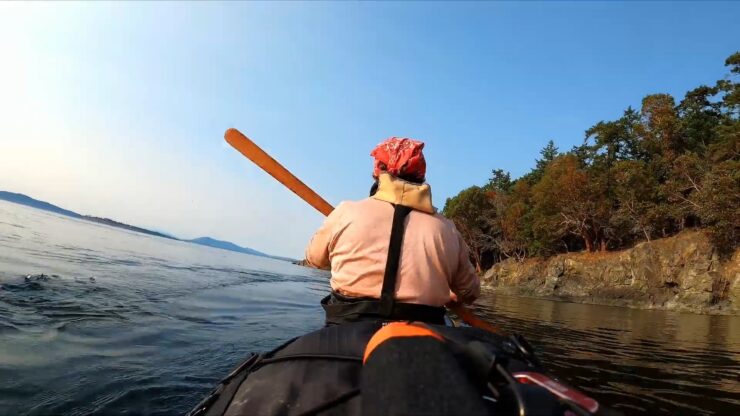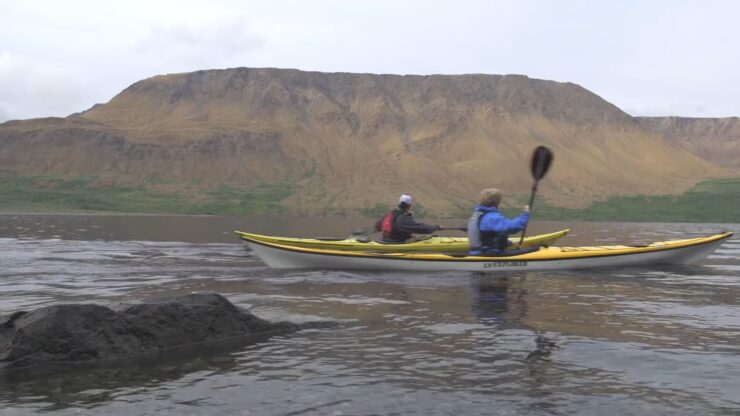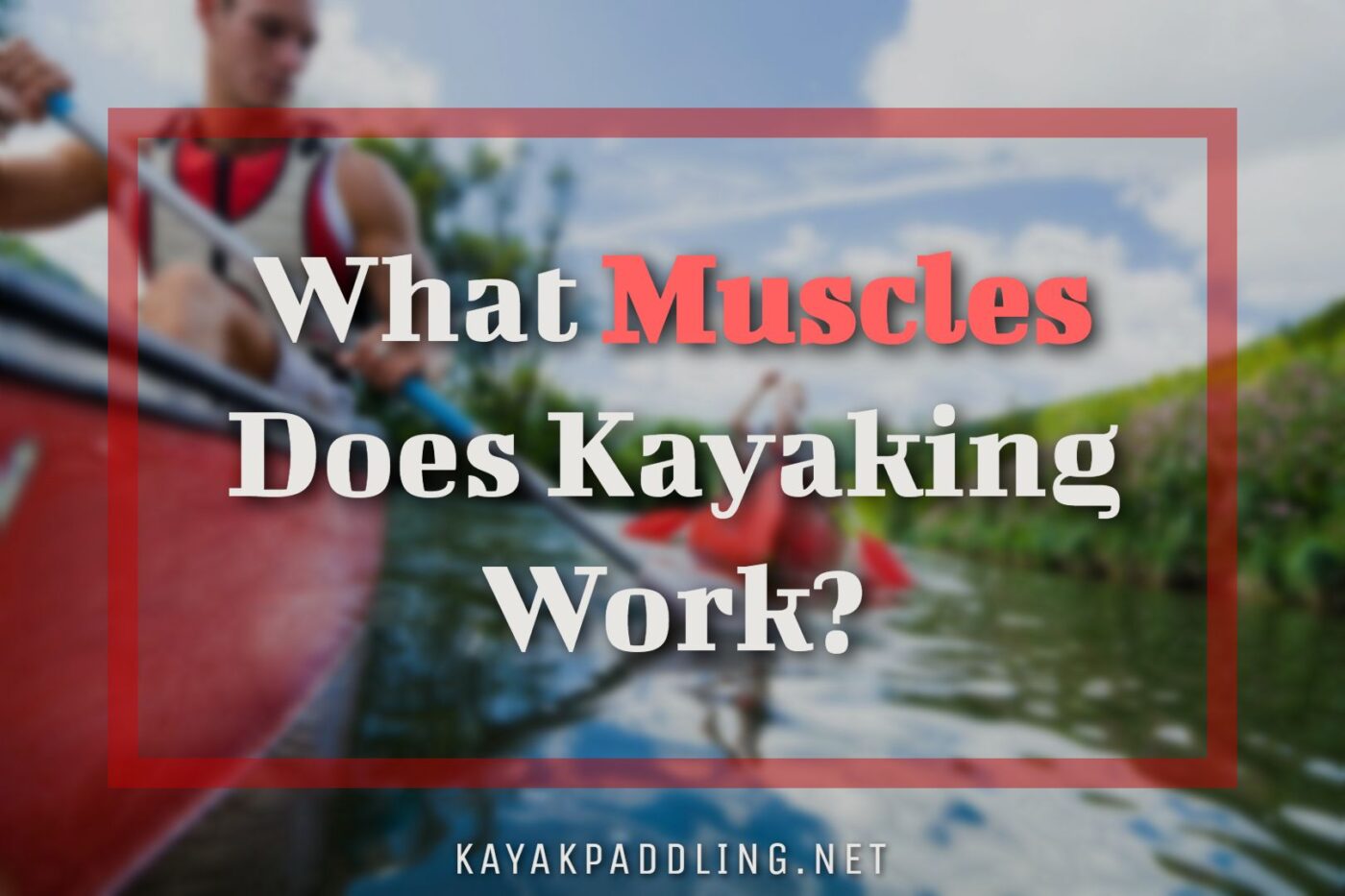Physical activity is important for everyone, but it becomes even more important when you are trying to lose weight or get in shape. The key to getting the most out of any type of exercise (or physical activity) is to find one that fits your interests and abilities. For some people, perhaps because they wish they were “outdoorsy” but have never enjoyed camping or canoeing, kayaking seems like a good option. But what muscles does kayaking work?
Most types of water sports involve paddling with your arms while seated in a narrowboat over an unstable surface while surrounded by natural elements. Water skiing, surfing, and white water rafting are all activities where balance is essential to prevent being thrown from the boat. Kayaking is very similar, and while it can be a great workout, not everyone has the physical ability necessary to carry out the movements.
Think about whether you would enjoy kayaking before committing to join a team or purchase your own personal craft. If you do plan on trying this exercise activity, it’s important to note that over time your upper body strength will improve and you may discover muscles you never knew existed.
Table of Contents
ToggleIs Kayaking Good Exercise?
Kayaking is a great way to get in some physical activity while enjoying the outdoors, but it isn’t necessarily the easiest or most efficient form of exercise. For example, bicycling uses more bodyweight for its energy expenditure so you burn calories at a faster rate. But kayaking can be simple and fun if you are careful about technique and pay attention to common-sense safety concerns.
Is kayaking good exercise? Kayaking is an excellent workout that gives you an opportunity to spend time outdoors while building muscle around your arms, shoulders, backside, thighs, calves, and even abdomen.
Kayaking works all of the major muscle groups:

Triceps and biceps: paddling works the muscles in your upper arms that generate power with each stroke. These muscles should be well conditioned to prevent excessive stress on the elbows and shoulders as you paddle.
Chest: kayaking can also be a good upper body workout for your chest muscles, the muscles in the front of your upper body.
Lower back and abdominals: kayaking is not a weight-bearing exercise, but it does require you to maintain an upright seated position while supporting your arms over extended periods of time. Maintaining a stable posture requires strong lower back and abdominal muscles which will get stronger with more frequent activity.
Kayaking can provide a low-impact form of cardiovascular training that is appropriate for all age groups, particularly those with joint problems or other health issues that limit their ability to take part in more strenuous activities such as running or cycling. Kayaking may be more suitable than some other types of aerobic activity because your upper body works as a counterbalance to your lower body, taking stress off of the hips and knees.
Kayaking can be a fun activity for families because children tend to love the water and it is a safe sport that doesn’t require a great deal of strength or athletic ability. Start with short trips that last between 10 and 20 minutes. Before going out on longer or more strenuous trips, take a few lessons from a certified instructor to learn the basics of kayaking techniques.
Always remember to check weather conditions before going for a trip and dress appropriately for water temperatures. Take along plenty of fluids and snacks to keep your energy level up during your workout. If you are using a kayak as part of an exercise routine, it is important to drink extra water before, during, and after your activity to prevent dehydration.
Kayaking as a hobby

Kayaks can be expensive so you should always try them out at local recreation centers or clubs before purchasing one of your own. Most kayaks come with paddles which you will need in order to get started. Again, you should not purchase a paddle before trying out several styles to determine which is most comfortable for your height and arm length.
Paddling can be done alone or in tandem with friends. While kayaking by yourself isn’t as much fun as taking part in an activity with other people, it ensures that you will always have time for your workout even if your schedule is hectic.
Paddling is a full-body activity, working all muscle groups throughout the upper body as well as those in the lower back, buttocks, and legs. Paddlers use their core to maintain stability by twisting side-to-side or standing up while simultaneously adjusting their position to move forward through the water.
Conclusion
Kayaking is often seen as a lazier type of sport. What is more relaxing than paddling along the oceans, rivers, and lakes while admiring the beauty of nature and taking a relaxing break from your daily routine? But that isn’t the case! Sure, kayaking is an excellent opportunity to enjoy nature, but it could be an extremely complete workout, working out the same muscles you’ve worked on during your training in the gym.
You need to make sure that you are kayaking the right way. And doing an entire exercise that’s both a calorie burner and a secure exercise is contingent on the right kayak stroke. All strokes should always start with the foot and boat meet. This is crucial since it’s the point where “power transfer” for the stroke begins.
Once you are sure that your feet are securely anchored within the kayak’s foot braces then you can start your stroke. Learning this technique will be essential if you decide to try other kayaking methods like rolling. This could also potentially save your life in a dangerous situation.
Keep in mind your hips constitute at which the kayak that comes into contact with your body’s core. If you are required to utilize brace exercises or choose to do the kayak roll, it’s essential to learn the “hip snap” that will help your body and the kayak in the direction you want to take them.
Adelaide Gentry, a seasoned kayaking enthusiast and expert, is the driving force behind KayakPaddling.net. With over a decade of experience navigating the world’s most challenging waterways, Adelaide combines her passion for adventure with a deep knowledge of kayaking to provide insightful and practical guidance for paddlers of all levels.
Related Posts:
- 16 Best Kayak For Beginners 2025 - Kayaking Adventure Gear
- Canoe vs. Kayak: Differences and Benefits You Need to Know
- Best Places to Go Canoeing and Kayaking in Atlanta -…
- 10 Best Kayaks For Camping 2025 - Lightweight and…
- 12 Best Fishing Lures Ever 2025 - Baits That…
- Best Kayak Dog Platforms, Seats, Deck, Attachments,…












